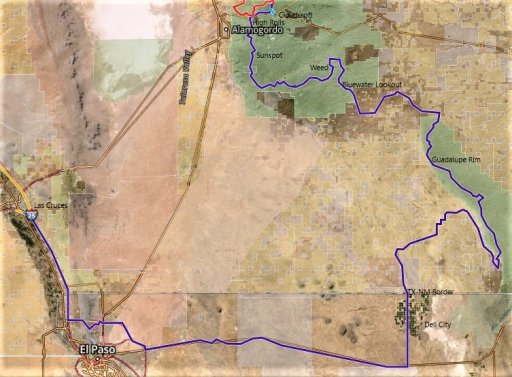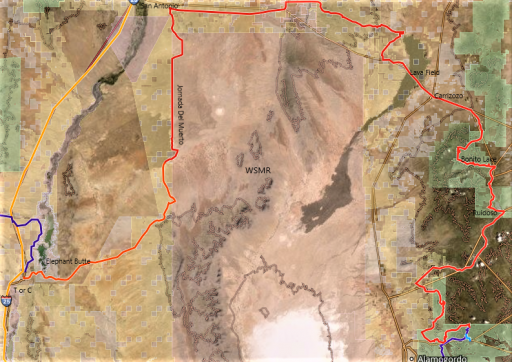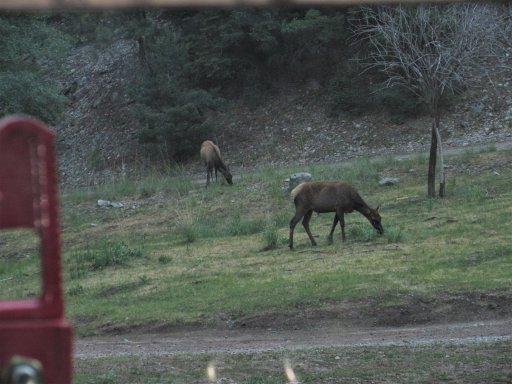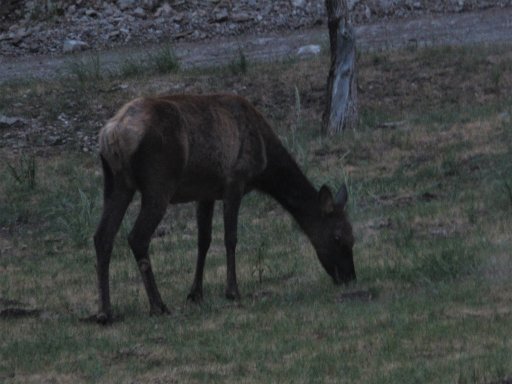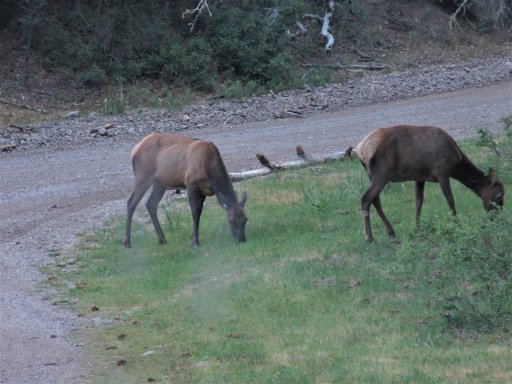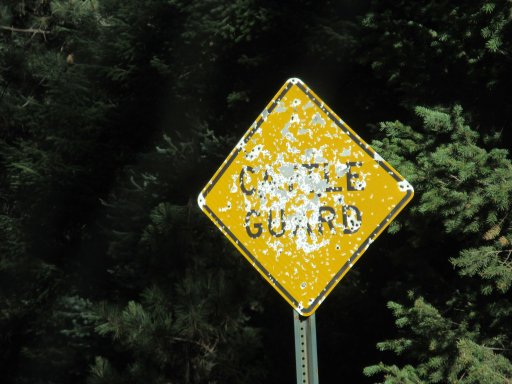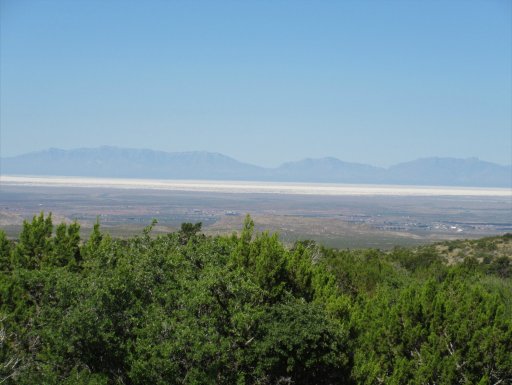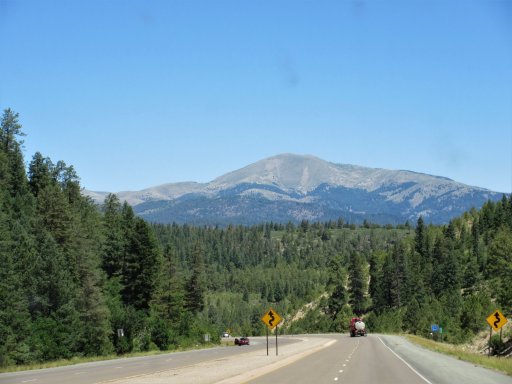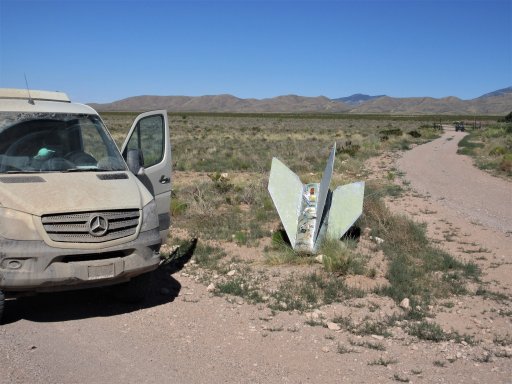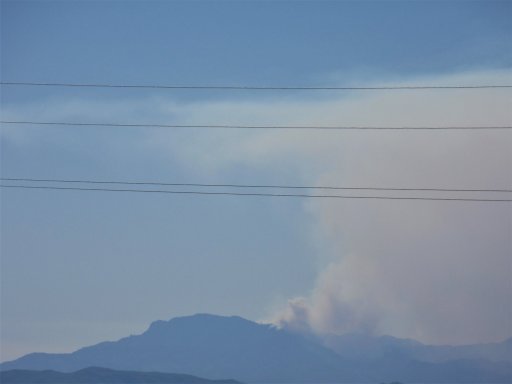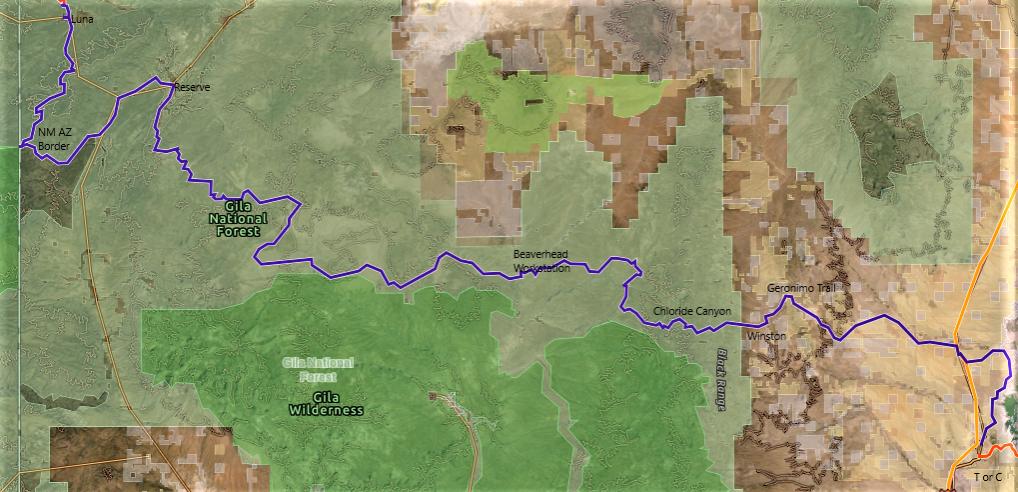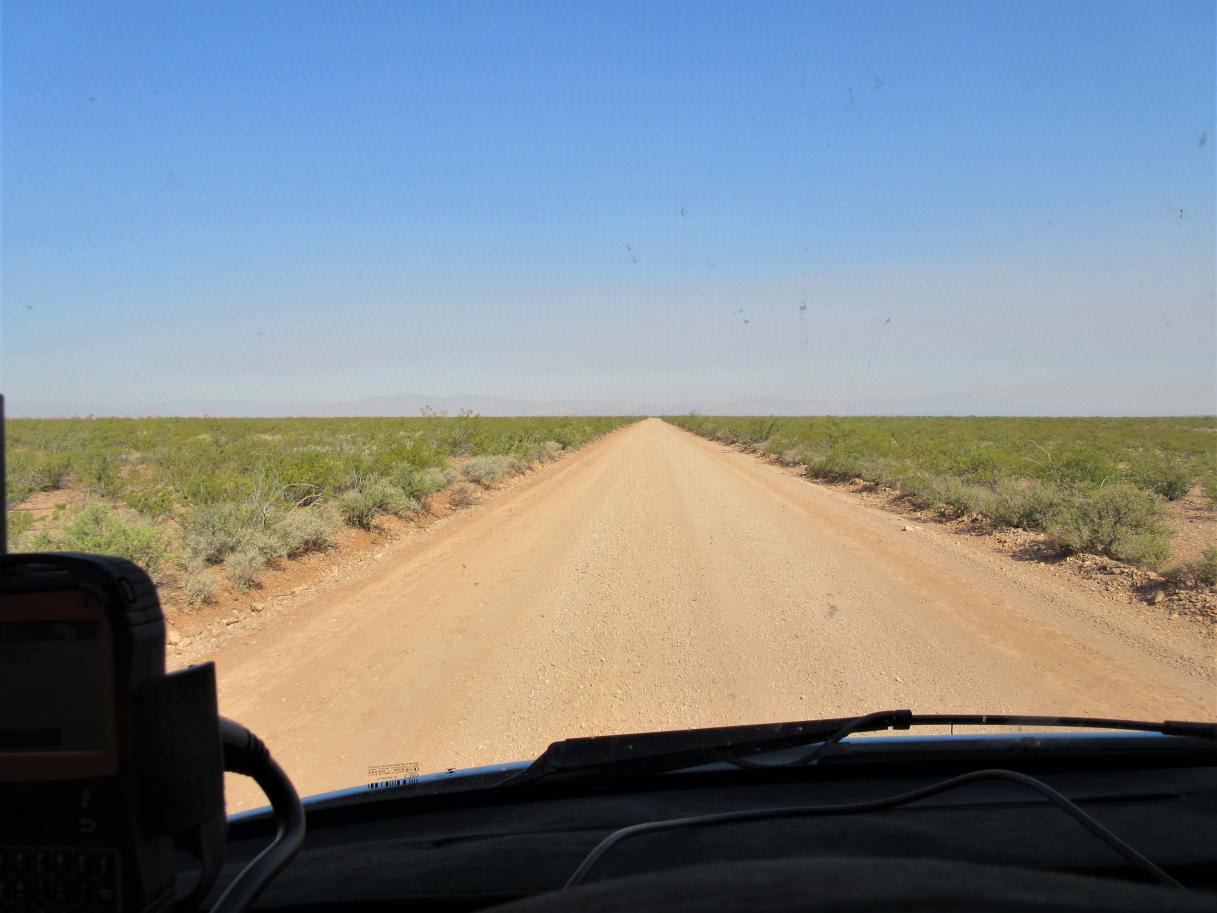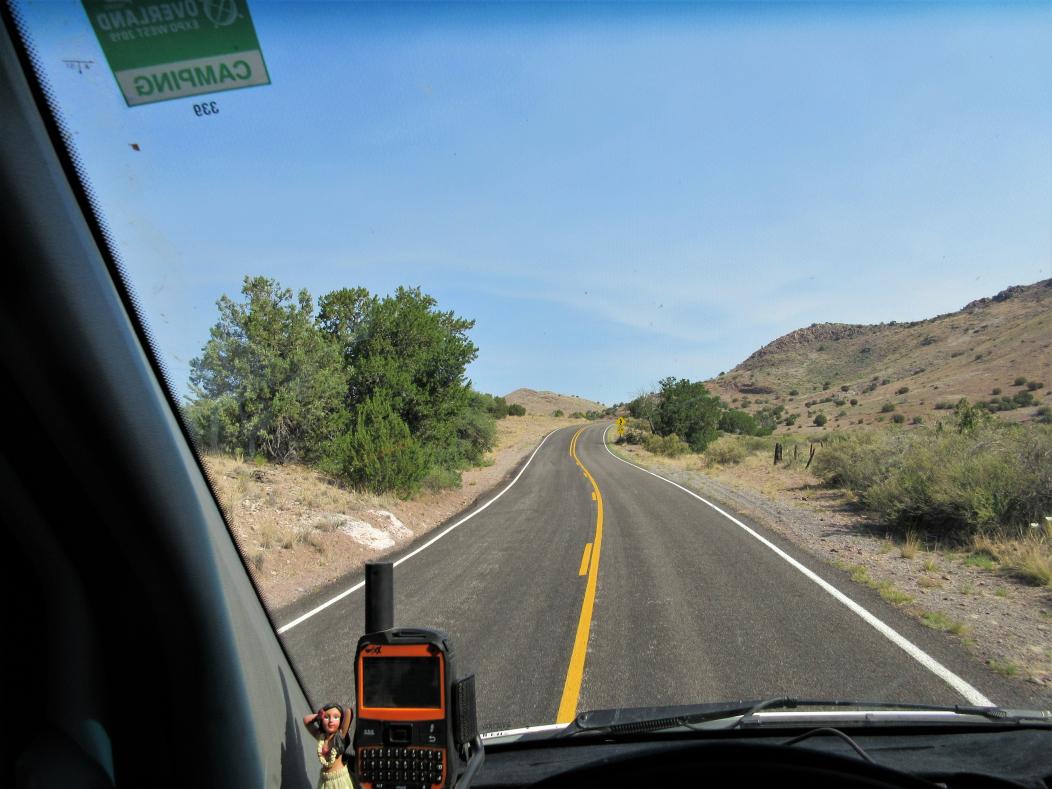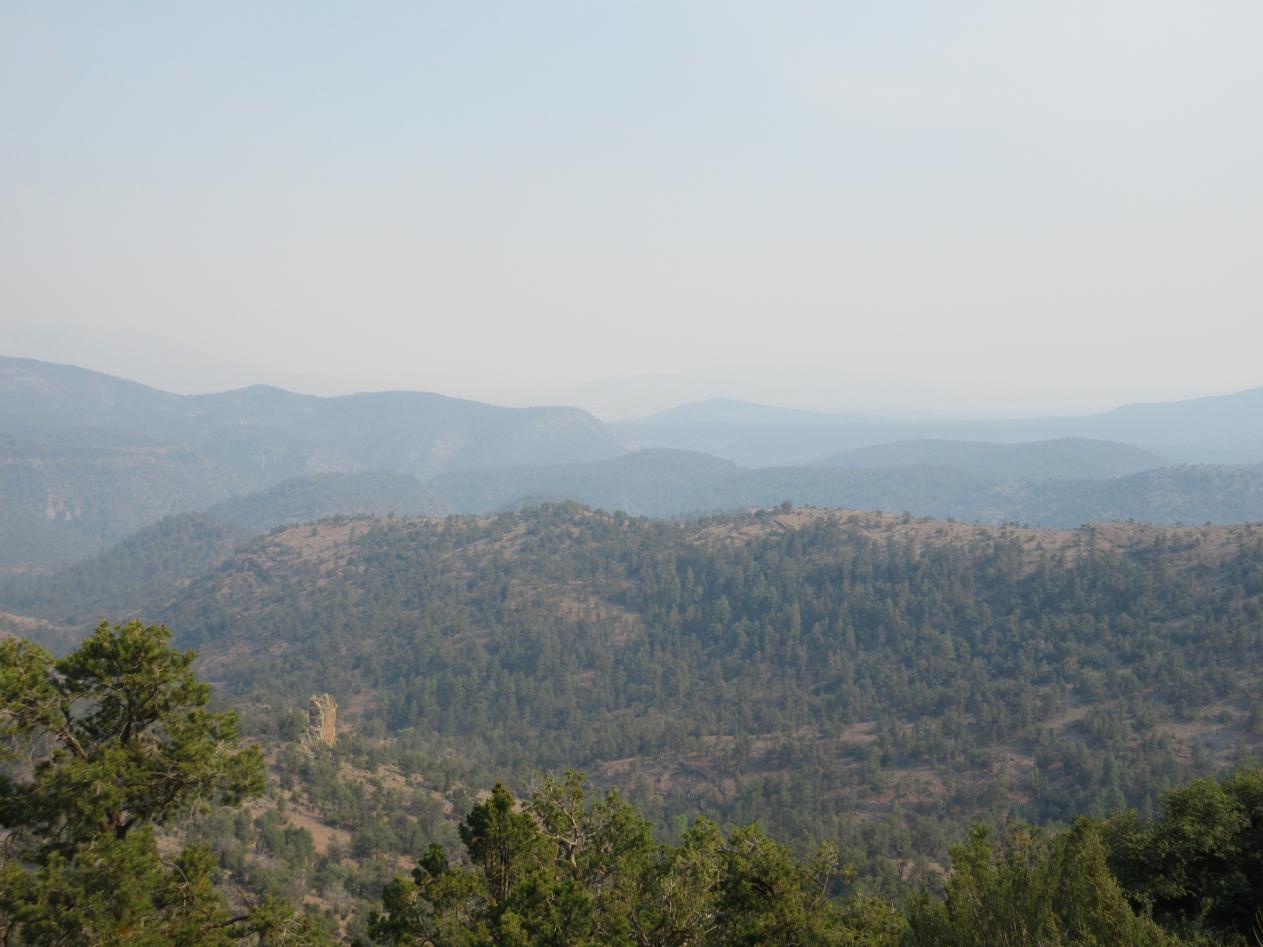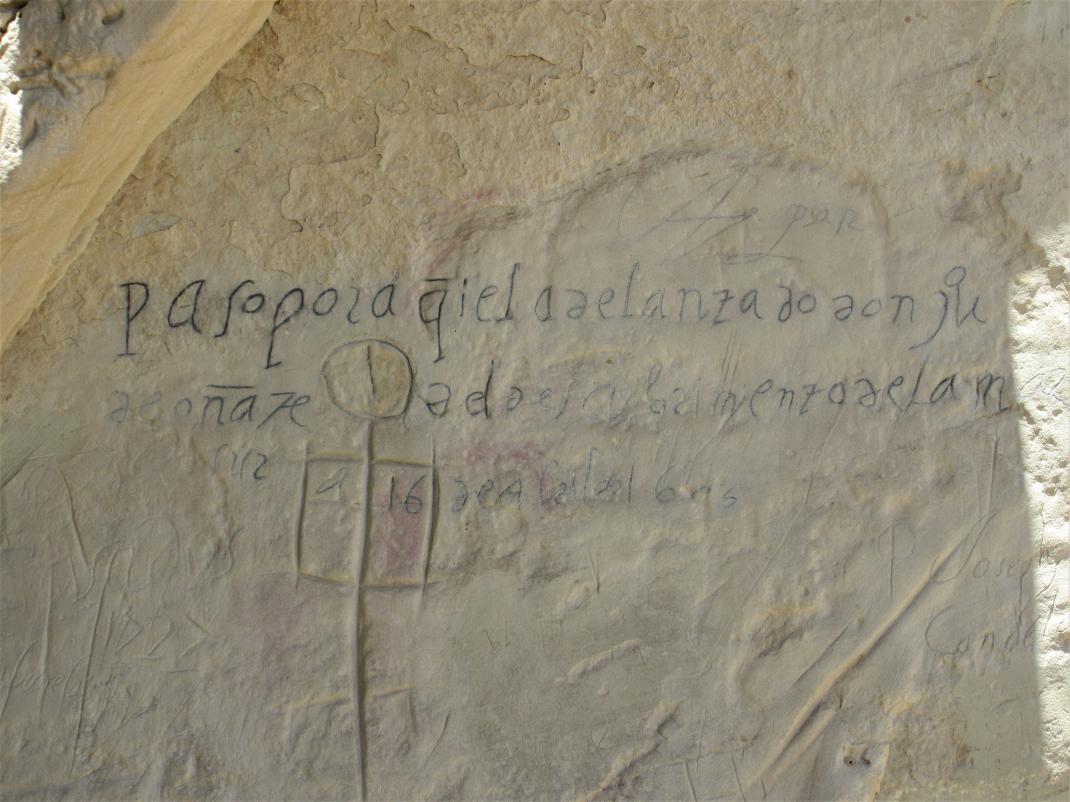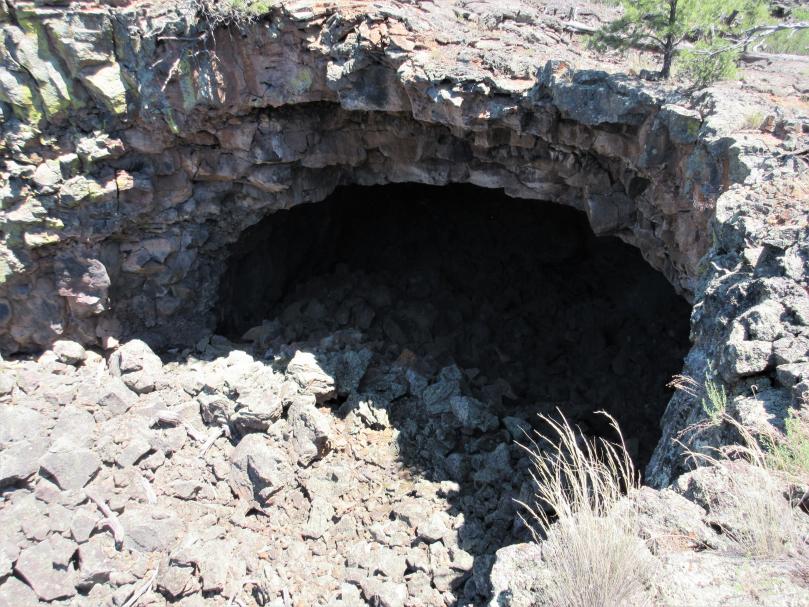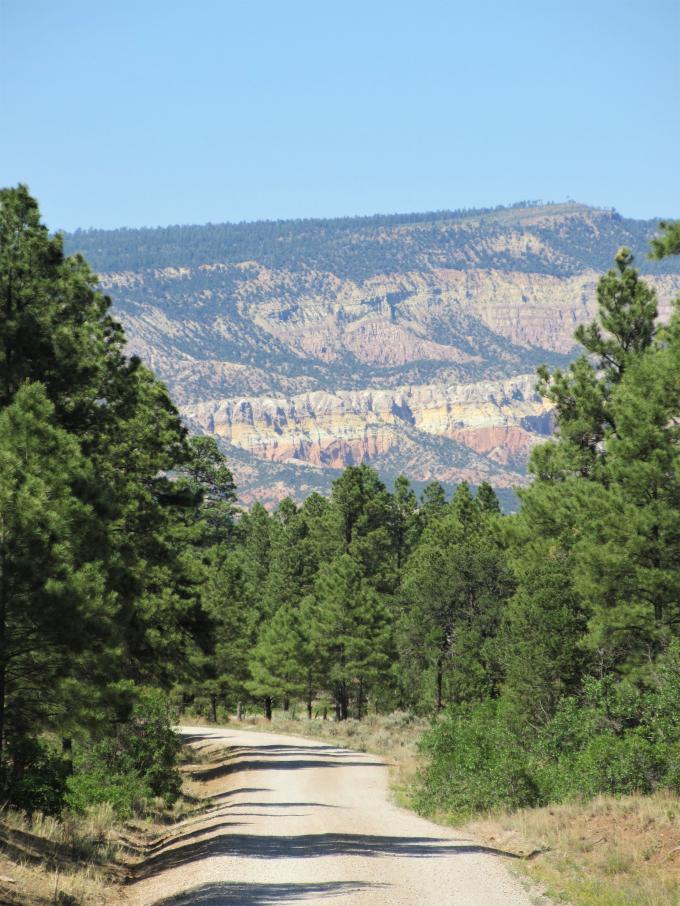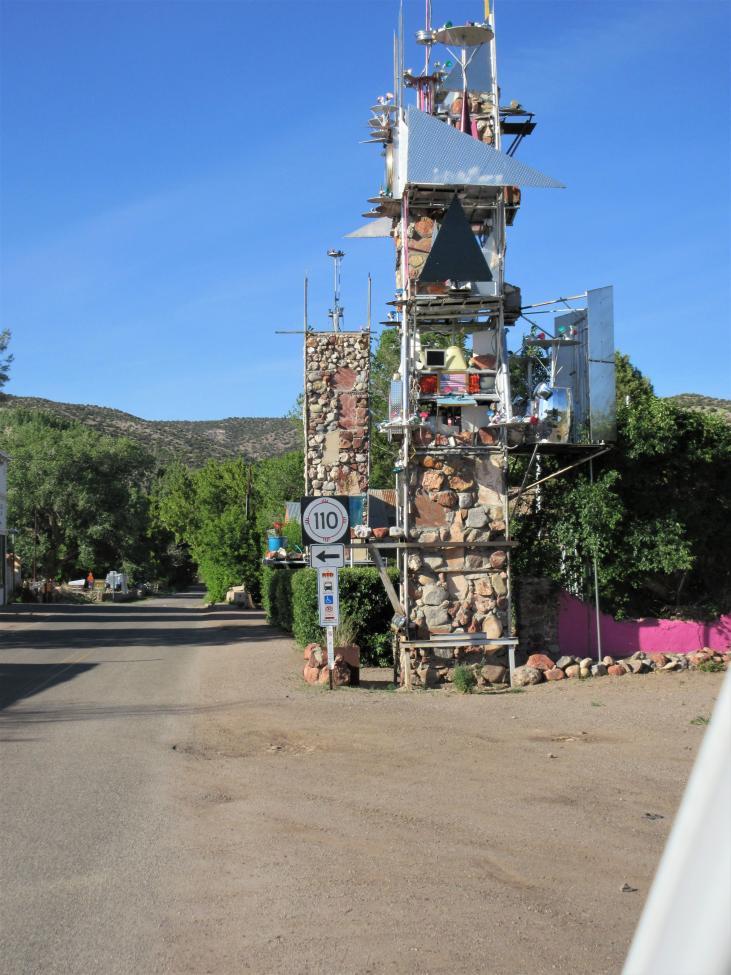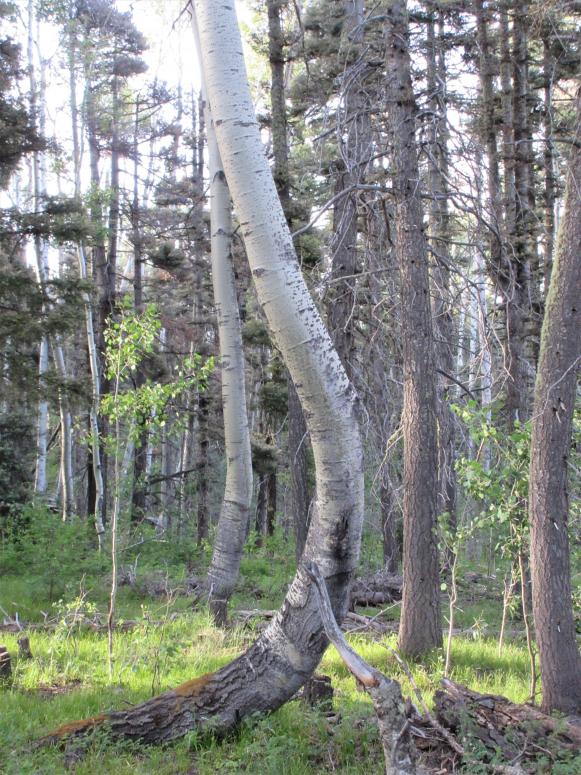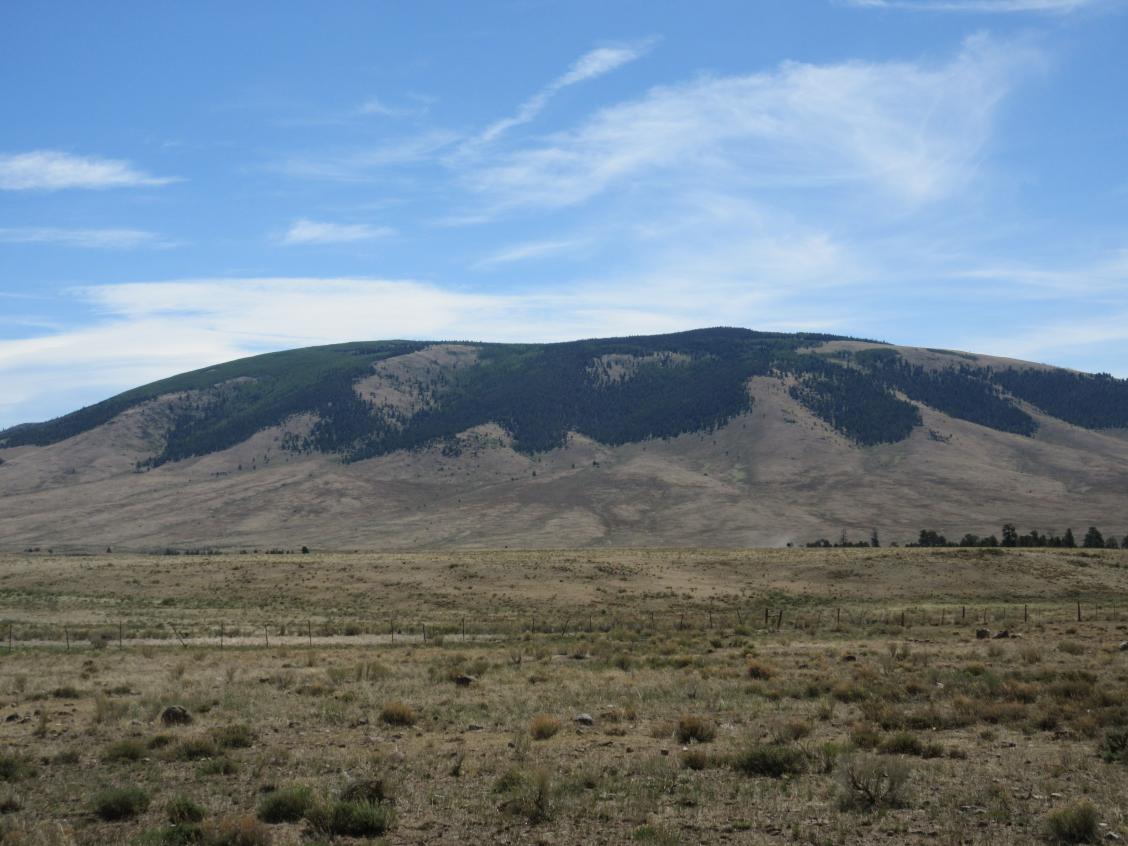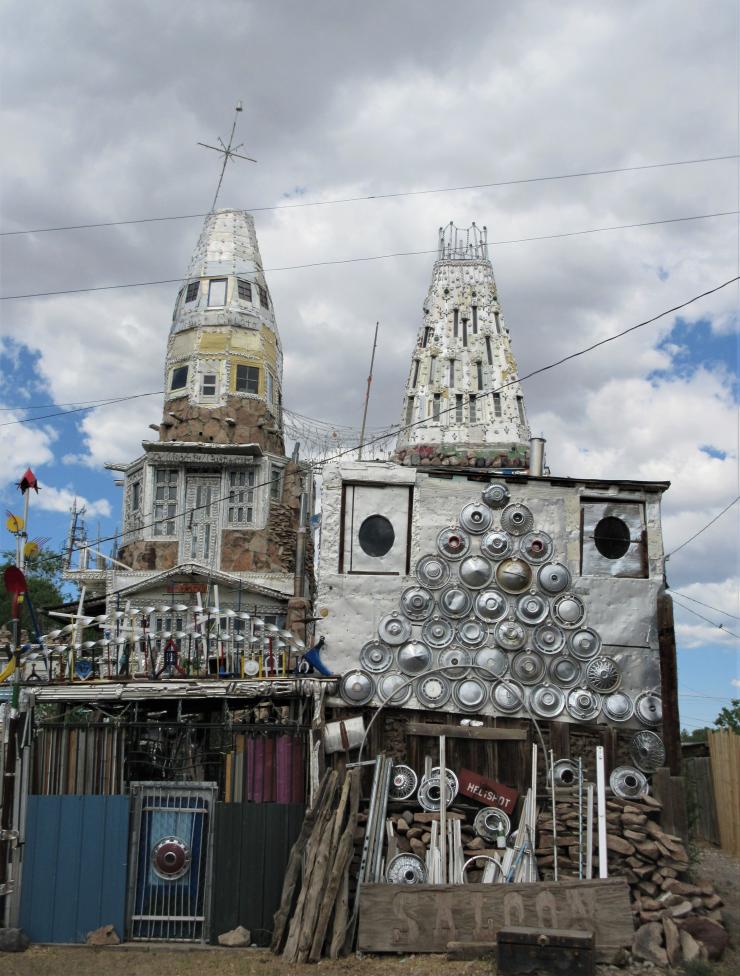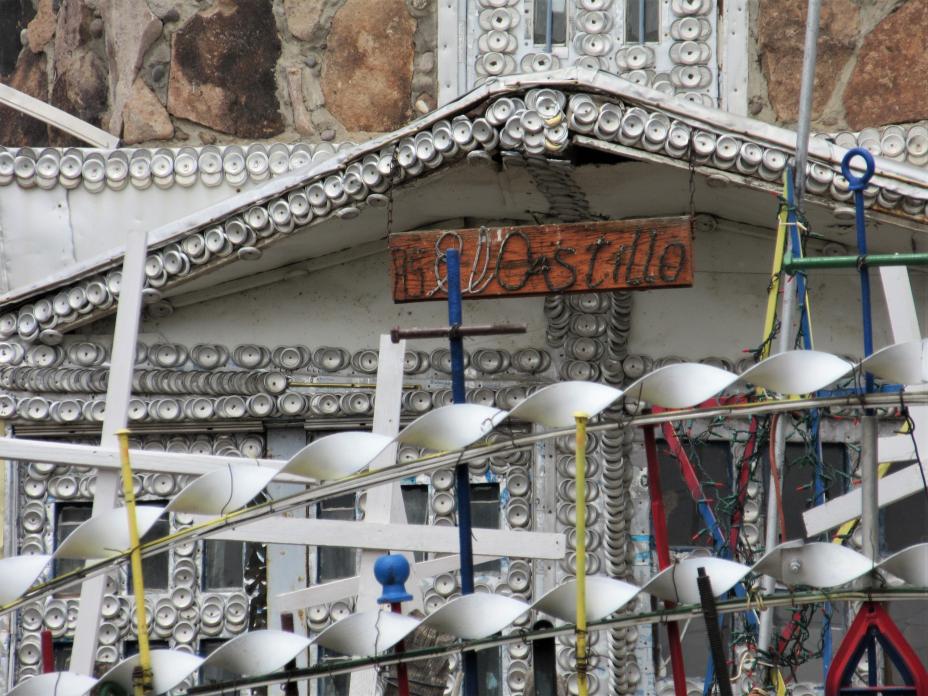
Member III
The entire route:
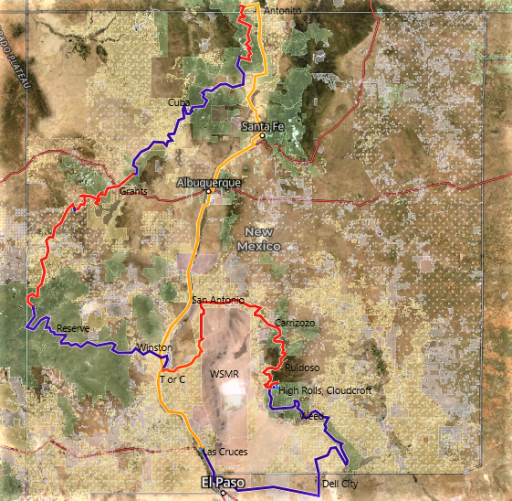
Day 1
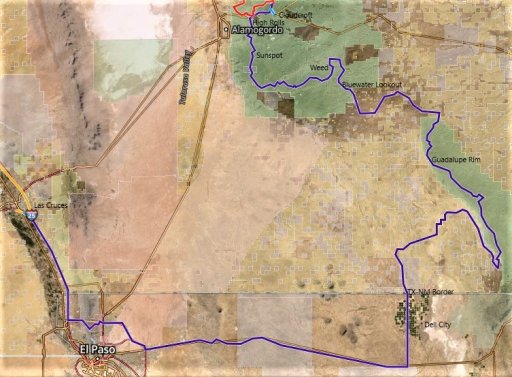
I met up with Jimmy and Suzie from Prescott, AZ, and their pup, Luna, in Las Cruces. The plan was to motel it there that night (Monday), and then slab it to Dell City, TX in the morning to start the offroad route. When I got the motel, they were already there. Problem – a check engine light had come on in their van on the way to Cruces. Jim had a code reader, and it seemed to be a problem with the DEF system, but didn’t appear fatal. In fact, the light was intermittent, and so they decided to continue on, hoping they wouldn’t get the dreaded Sprinter “countdown.”
Tuesday morning we headed off to Dell City, and got there about 11 A.M., a little later than expected. Google Maps said it was about a two-hour drive, and it ended up being three-ish. Dell City is not exactly rich in colorful history. The town was founded in the late 1940s, when an aquifer was discovered underneath. This allowed for the cultivation of about 40,000 acres of previously desert land. Over the years, the population grew, peaking at almost 1,000, but only about 400 residents remain there today.
Fuel up, air down, and we’re off! A couple miles up the road, there’s a cattleguard and barb-wire fence. It’s the TX-NM border, no sign or anything, just a fence.
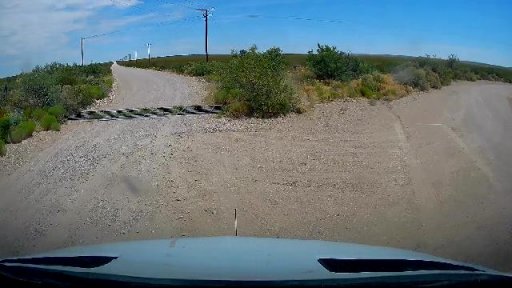
The first 130 miles is flattish desert with relatively good roads. Then the route enters the Lincoln National Forest and tips up to the Guadalupe Rim, a 1,500 to 2,000 foot high scarp with incredible views to the West. The rim is part of a giant Permian reef that was formed about 250 million years ago, buried in sediment, and later uplifted into what we now know as the Guadalupe Mountains.
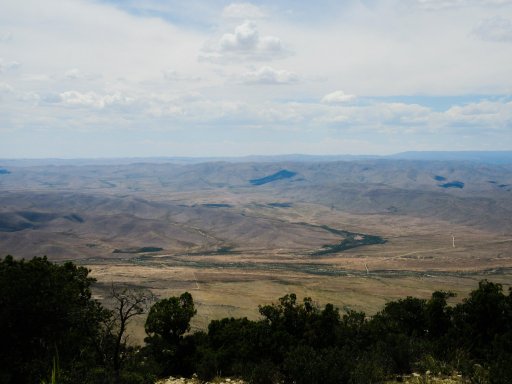
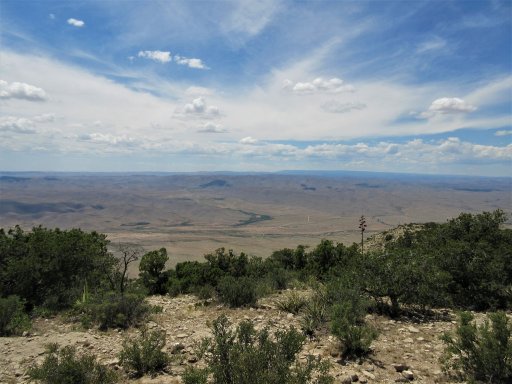
Guadalupe Mountains National Park, just south of the border, is home to the 4 highest peaks in Texas. The reef formation is the same one that contains Carlsbad Caverns National Park to the East as well. The road winds along the rim through the pinon-juniper scrub along the rim for several miles, before dropping back down into the desert.
The desert section lasts not long, though, and soon we climb up into the Sacramento Mountains, first into P-J, and then into the pines. The route passes by the Bluewater Lookout, built in 1917, and quite possibly the oldest in the Lincoln NF.
Our next fuel stop was the Weed Store in Weed, NM in the Agua Chiquita Canyon. Weed was established in 1885, but there was trapping, ranching, and hunting activity in the area prior to that date. The town was named not because of the surrounding flora, but rather after a prominent merchant from White Oaks. Although W.H. Weed probably never visited the area, he set up a store at a crossroads there, and others settled around it. At one time, about 1,000 people called Weed home. Now the population is down to a mere 20.
Winding our way up the small valleys past Weed in the late afternoon, we saw several elk, deer, and a coyote hunting some sort of small prey.
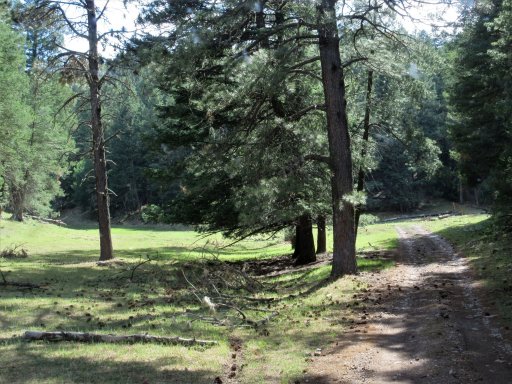
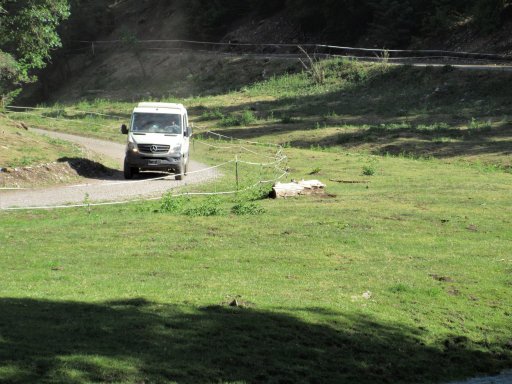
Then we were out into the P-J on West Side Road, high above Alamogordo on our way to High Rolls. On the peaks high above the road are the Sacramento Peak Solar Observatory and the Apache Point Stellar Observatory in Sunspot, NM. A side trip to Cloudcroft and Sunspot would be nice, but the timing wasn’t right for us.
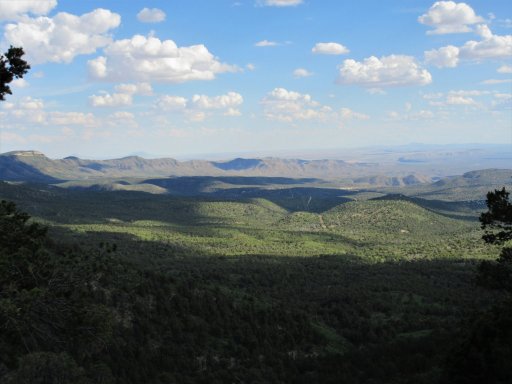
We continued on to High Rolls, founded in the 1880s and birthplace of Pulitzer Prize-winning wartime cartoonist Bill Mauldin. The first store, built in 1905, is still standing today. We decided we were not going to make it to Ruidoso before dark, and continued a few miles up into the NF and found a campsite for the night.
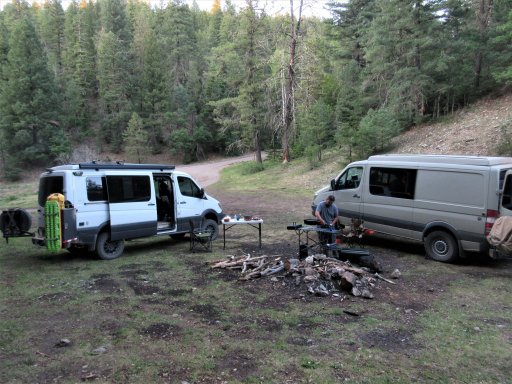
It was a long day. Total miles for the day, including the drive from Las Cruces to Dell City, was about 345 miles.

Day 1

I met up with Jimmy and Suzie from Prescott, AZ, and their pup, Luna, in Las Cruces. The plan was to motel it there that night (Monday), and then slab it to Dell City, TX in the morning to start the offroad route. When I got the motel, they were already there. Problem – a check engine light had come on in their van on the way to Cruces. Jim had a code reader, and it seemed to be a problem with the DEF system, but didn’t appear fatal. In fact, the light was intermittent, and so they decided to continue on, hoping they wouldn’t get the dreaded Sprinter “countdown.”
Tuesday morning we headed off to Dell City, and got there about 11 A.M., a little later than expected. Google Maps said it was about a two-hour drive, and it ended up being three-ish. Dell City is not exactly rich in colorful history. The town was founded in the late 1940s, when an aquifer was discovered underneath. This allowed for the cultivation of about 40,000 acres of previously desert land. Over the years, the population grew, peaking at almost 1,000, but only about 400 residents remain there today.
Fuel up, air down, and we’re off! A couple miles up the road, there’s a cattleguard and barb-wire fence. It’s the TX-NM border, no sign or anything, just a fence.

The first 130 miles is flattish desert with relatively good roads. Then the route enters the Lincoln National Forest and tips up to the Guadalupe Rim, a 1,500 to 2,000 foot high scarp with incredible views to the West. The rim is part of a giant Permian reef that was formed about 250 million years ago, buried in sediment, and later uplifted into what we now know as the Guadalupe Mountains.


Guadalupe Mountains National Park, just south of the border, is home to the 4 highest peaks in Texas. The reef formation is the same one that contains Carlsbad Caverns National Park to the East as well. The road winds along the rim through the pinon-juniper scrub along the rim for several miles, before dropping back down into the desert.
The desert section lasts not long, though, and soon we climb up into the Sacramento Mountains, first into P-J, and then into the pines. The route passes by the Bluewater Lookout, built in 1917, and quite possibly the oldest in the Lincoln NF.
Our next fuel stop was the Weed Store in Weed, NM in the Agua Chiquita Canyon. Weed was established in 1885, but there was trapping, ranching, and hunting activity in the area prior to that date. The town was named not because of the surrounding flora, but rather after a prominent merchant from White Oaks. Although W.H. Weed probably never visited the area, he set up a store at a crossroads there, and others settled around it. At one time, about 1,000 people called Weed home. Now the population is down to a mere 20.
Winding our way up the small valleys past Weed in the late afternoon, we saw several elk, deer, and a coyote hunting some sort of small prey.


Then we were out into the P-J on West Side Road, high above Alamogordo on our way to High Rolls. On the peaks high above the road are the Sacramento Peak Solar Observatory and the Apache Point Stellar Observatory in Sunspot, NM. A side trip to Cloudcroft and Sunspot would be nice, but the timing wasn’t right for us.

We continued on to High Rolls, founded in the 1880s and birthplace of Pulitzer Prize-winning wartime cartoonist Bill Mauldin. The first store, built in 1905, is still standing today. We decided we were not going to make it to Ruidoso before dark, and continued a few miles up into the NF and found a campsite for the night.

It was a long day. Total miles for the day, including the drive from Las Cruces to Dell City, was about 345 miles.
Attachments
-
152 KB Views: 89
Last edited:

